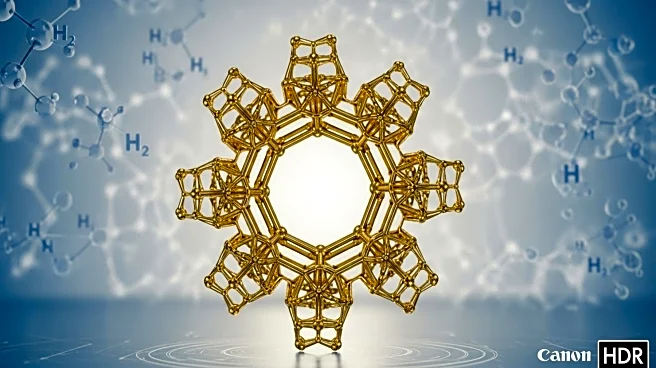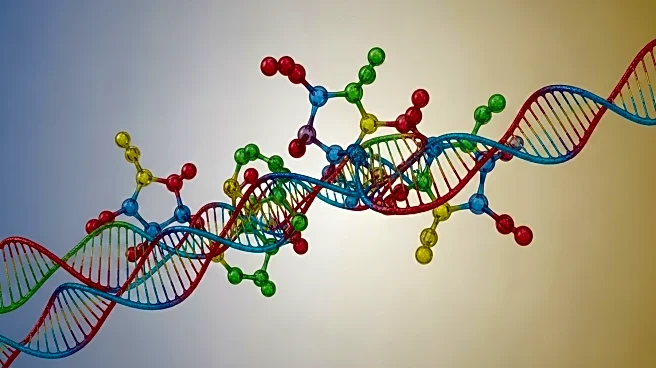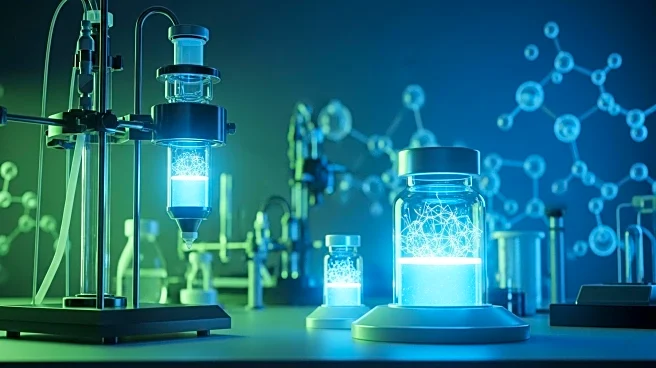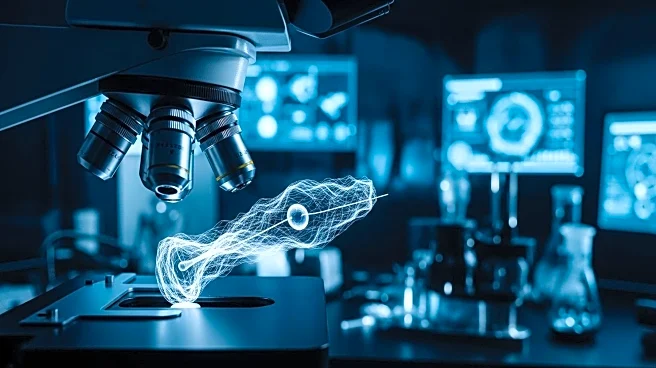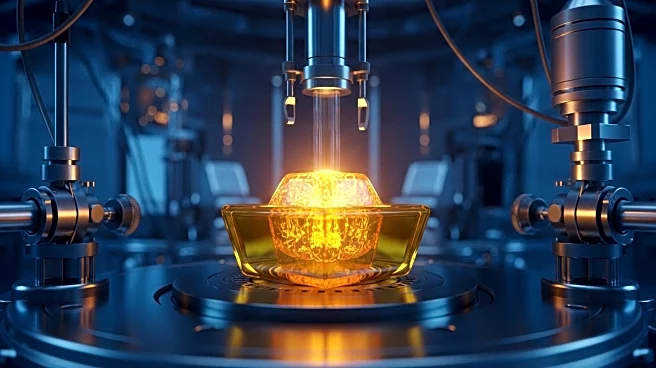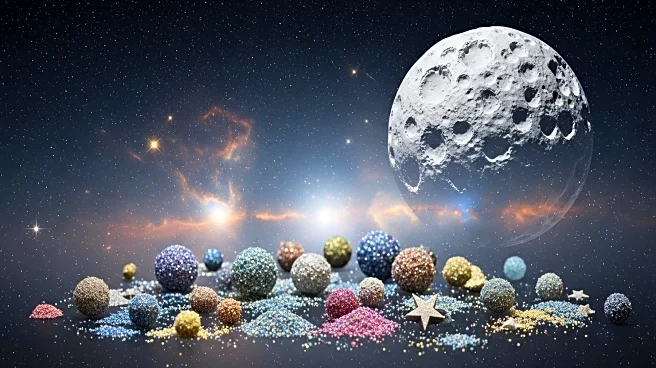What is the story about?
What's Happening?
Researchers at the U.S. Department of Energy's SLAC National Accelerator Laboratory have accidentally created a new compound, gold hydride, under extreme laboratory conditions. This discovery was made during experiments aimed at understanding the transformation of hydrocarbons into diamonds under high pressure and temperature. The team used a thin layer of gold foil to absorb X-rays and transfer heat, which unexpectedly reacted with hydrogen atoms to form gold hydride. This compound, composed solely of gold and hydrogen, was formed in a superionic state, enhancing its conductivity and providing new insights into material behavior under extreme conditions. The findings, published in Angewandte Chemie International Edition, suggest potential for discovering new chemistry at high pressures and temperatures.
Why It's Important?
The creation of gold hydride is significant as it opens new avenues for studying dense hydrogen, which is challenging to observe due to its weak X-ray scattering. This research could provide insights into the interiors of planets and nuclear fusion processes in stars, potentially aiding in the development of fusion energy technology on Earth. Additionally, the discovery challenges the conventional understanding of gold as an unreactive metal, suggesting that extreme conditions can lead to the formation of exotic compounds. This could lead to advancements in high-pressure chemistry and the modeling of material properties under such conditions, impacting fields like planetary science and energy research.
What's Next?
Future research may focus on extending the simulation framework used in this study to model other exotic material properties under extreme conditions. The ability to experimentally produce and model these states could lead to further discoveries in high-pressure chemistry and material science. Researchers may also explore the potential applications of gold hydride in studying dense hydrogen and its implications for fusion energy technology. Continued investigation into the behavior of materials at high pressures and temperatures could yield new compounds and insights into planetary interiors and stellar processes.
Beyond the Headlines
The discovery of gold hydride highlights the potential for unexpected chemical reactions under extreme conditions, challenging traditional views of chemical reactivity. This could lead to ethical considerations regarding the manipulation of materials at such pressures and temperatures, as well as the environmental impact of high-energy experiments. The research underscores the importance of interdisciplinary collaboration in advancing scientific knowledge and the need for responsible exploration of new chemical frontiers.
AI Generated Content
Do you find this article useful?
